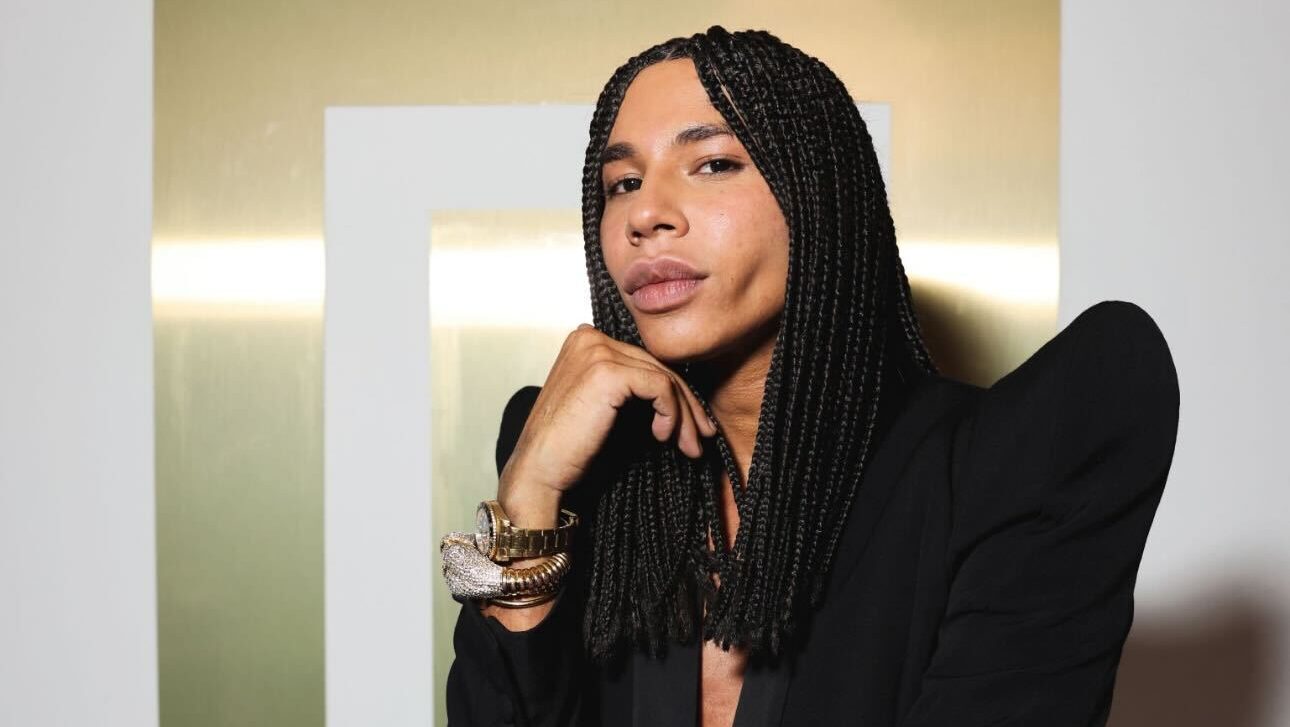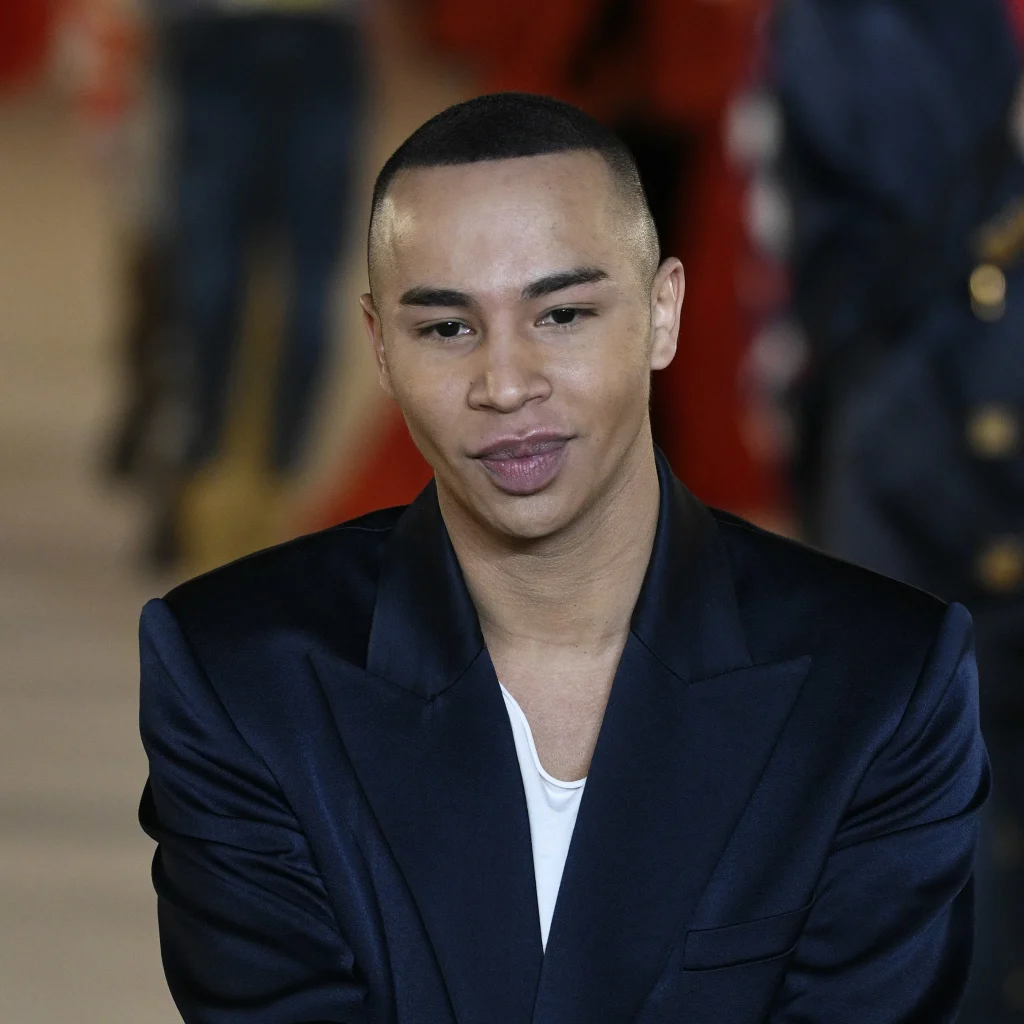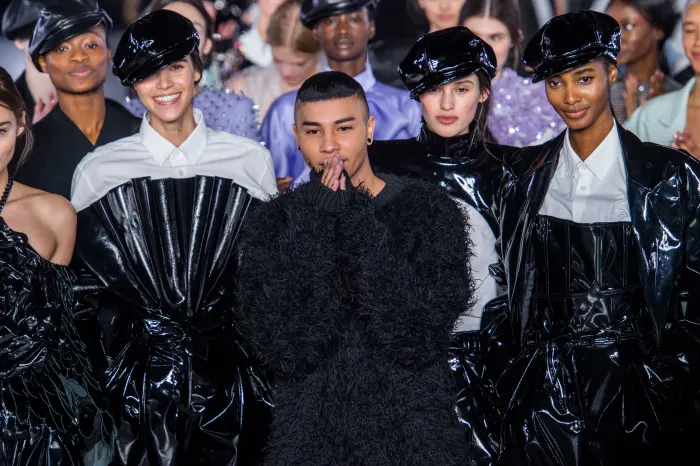
Rousteing’s departure marks the end of one of fashion’s most electric eras, and the beginning of an uncertain but thrilling new chapter for both the designer and the industry he helped reshape.
In true Rousteing fashion, he announced it not with fanfare but with feeling.
“Today marks the end of my Balmain era,” he wrote on Instagram. “I arrived at 24 with my eyes wide open and the determination to persevere, always. Today, I leave with my eyes still wide open, open to the future and the beautiful adventures ahead.”
It read like a benediction, or possibly a door swinging open into a new beginning.
To understand what this exit means, you have to understand who Olivier Rousteing is, and why his story has always mattered, especially to those of us whose joy, brilliance, and lineage have been pushed to the margins of luxury spaces.
Rousteing entered fashion not with pedigreed tutors or generational access, but with stubborn, divine refusal. At 18, he dropped out of fashion school just six months in. His parents, already confused about his dream, were even more confused by the leap. But leaps are how you reach the places that seem impossible.
“I fought because I had no school or background behind me, just determination and desire,” he told Vogue in 2021.
His gamble paid off. In 2011, at just 24, he became the youngest non-founding designer to lead a major Parisian fashion house since Yves Saint Laurent took the reins at Dior at 21. He was also the first Black creative director at a major European luxury house, a milestone that should not have taken until the 21st century to exist.
But it wasn’t just the firsts. It was the way he wielded them with ambition, glitter, defiance, and tenderness.

When Rousteing stepped into leadership, Balmain was a storied but fading name. Under his watch, it became a cultural engine, beloved by celebrities, adored by fans, and profitable in ways the house hadn’t seen in decades.
In 2011, Balmain was making roughly $34 million annually. By 2024, that revenue had surged past $344 million. This was not an accident, it was architecture.
“Olivier’s visionary leadership has not only redefined the boundaries of fashion but inspired a generation with bold creativity, unwavering authenticity, and commitment to inclusivity,” said Rachid Mohamed Rachid, CEO of Mayhoola, Balmain’s parent company.
His signature style, the metallics, pearls, embroidery, military silhouettes, body-conscious lines became a language unto itself. A Balmain garment didn’t whisper; it announced.
And yet, underneath the glitz, Rousteing’s work was deeply emotional. When celebrities formed what became known as the “Balmain Army,” it wasn’t just a branding moment, it was revolutionary.

Rihanna, Kim Kardashian, Carla Bruni. Models such as Joan Smalls and Binx Walton.
This constellation of celebrities and muses didn’t simply wear Balmain, they embodied an aesthetic that Rousteing curated with the precision of someone reclaiming a childhood dream.
In the 2010s, his maximalist vision arrived right on time. The world wanted spectacle, shine, audacity. Rousteing gave us that and more. He gave us belonging, and he crafted a world where Black beauty was not an outlier or an accessory to the runway, but its beating heart.
Even when critics scowled at the extravagance, “so many embellishments…it’s impossible to imagine anyone sitting,” the New York Times once mused, Rousteing doubled down. Because why should fashion be comfortable for the world that’s always tried to make us small?
And long before social media dictated the cultural rhythm of the industry, Rousteing was one of the first luxury leaders to understand that Instagram would become fashion’s new front row. He didn’t just dress stars; he became one, championing transparency, dialogue, and storytelling.
And perhaps one of his most intimate acts of storytelling was his 2019 Netflix documentary Wonder Boy, where he shared his journey as an adoptee searching for his biological parents. His vulnerability became part of his artistry, a reminder that fashion is not only fabric but emotional architecture.

From his monumental 10-year anniversary show at the Cité Musicale to his annual Met Gala appearances (beginning all the way back in 2012), Rousteing cemented himself as a master of scale. His runways were less “shows” and more “movements.”
Music, movement, community, they formed the holy trinity of Balmain under his care.
Rousteing’s departure comes at a moment when the industry is asking itself real questions about inclusivity, sustainability, and the bodies it chooses to celebrate.
Balmain is 80 years old this year. Under Rousteing, it became one of the rare luxury houses where the state of mind, joy, sensuality, possibility, kept pace with the clothes.
He pushed fashion into a posture of expansiveness, well before the rest of the industry followed suit. And he did it while being Black, adopted, queer, young, and determined, identities that the corridors of haute couture have often shut out.
So yes, this departure is seismic. But no, it is not an ending.
This is a man who built beauty from refusal, family from imagination, and empire from a dream that no one else saw for him.
The future he walks toward now? It’s already shimmering, it’s already blooming. And like he promised, we all have a place in the next chapter.